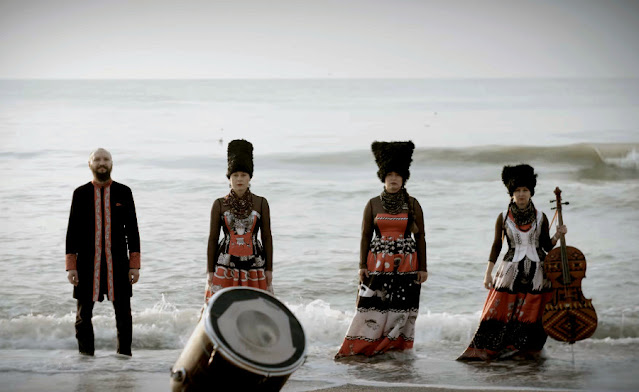Is sexism still as prevalent as it was 100 years ago?
International women's day is but a few days away, falling on the 8th of March. Throughout history women have faced a great degree of oppression and discrimination and therefore, the purpose of international women's day is to 'commemorate the cultural, political, and socioeconomic achievements of women', despite the adversity they have faced. Therefore in todays blog I will be looking at how things have changed for women over the past 100 years in terms of how the general discrimination and oppression we face has either improved or remained vastly similar to that of 1922.
Firstly I will note some of the progressions that have been made towards equality and women's rights over the past 100 years, this will highlight that ultimately women face far less oppression today than they did 100 years ago. Firstly, in the UK women have far more control over their own autonomy. This can be seen as women can now have the legal choice to have a safe abortion. Indeed until 1967 it was illegal to have any form of abortion, which of course took away the bodily autonomy of the pregnant woman. It also risked said women's lives as it could take a toll on their mental and physical health, carrying an unwanted child and could pose further risk to the woman's life if she were to have an illegal abortion carried out. Indeed, by bringing in the abortion act and its later amendments in the 90's (which allowed for greater freedom as to who was permitted abortions) women have secured a greater deal of control over their own bodies, allowing them to have a similar autonomy to men, at least up until a certain point in their pregnancy. This right to autonomy is further extended by the fact that contraception became free in 1974, allowing women more control over their autonomy and the freedom of choice. Indeed, in terms of pregnancy rights and thus women's right to maintain autonomy over their body, things have greatly improved over the past 100 years.
Furthermore women face less oppression in other areas of society. Following the Equal Pay Act of 1970 and the Equality act of 2010, it is now stated by law that men and women should have equal treatment in the work place, i.e, that women should not be paid less than a man who is of an equal position in the work place. This not only ensures that women aren't paid less by virtue of sexist ideology (that a woman's work is worth less than a mans) but that women can apply for a job in any job sector (given that they have the right qualifications). This allowed women to gain jobs which, 100 years ago, would have been thought of as unsuitable or unachievable for women, such as being a commercial airlines pilot or a security guard. Furthermore women also gained equal voting rights in 1928, whilst some women were able to vote from 1918 onwards it wasn't until this later date that women gained equal rights to men in terms of suffrage, as previously only women over the age of 30 with a substantial amount of wealth could vote. Therefore, it is clear that given women's current voting status and the laws which allow for more workplace equality that women today are somewhat more privileged than those 100 years ago as we face far less oppression and have obtained far more rights, equal to that of men.
Yet whilst women today are far better situated than those 100 years ago in terms of their freedoms and rights this does not mean that women are no longer under the threat of sexism. Indeed women still face a great degree of oppression and discrimination due to their gender, even if in law we are meant to be treated equally to our male counterparts. Firstly in terms of women's right to autonomy whilst the intricate terms of abortions should still be debated it is still easy to admit that women's rights in this area have vastly improved in the UK from that of 1922. However in many countries abortion is still illegal and women are forced to face the same hardships of not being able to seek legal abortions as women in the UK did in the 1920s. This becomes more troubling in places such as the US as abortion rights are being taken away rather than improved, leading to women facing nightmareish situations where they must face either having a child they do not want or face legal issues, such as fines and imprisonment, and issues to their own safety if the abortion is to be performed illegally. Furthermore, whilst not as crucial as women maintaining to right of choice and autonomy over their own body, there is still a general inequality when it comes to contraception in that it always fulls upon the woman to use internal contraception. This can emphasise some of the inequality still present in modern society as despite the adverse effects current contraception can have on some women and the fact that both men and women have an equal role to play in the conception of a child, there is little research or promotion of internal contraception for men. Highlighting some inherent sexism within the medical field and the way we view responsibility when it comes to the initial conception of a child despite both men and women playing equal parts.
Furthermore inequality is still rampant in other aspects of society. Firstly women on average still earn 15.4% less than their male counterparts, whilst the gender pay gap is generally decreasing it is clear that there is still discrimination in terms of wages and the positions women obtain. Indeed many women do not progress to the top level jobs due to worries about maternity leave or due to workplace discrimination/harassment in male dominated fields such as policing. Additionally perhaps the greatest form of discrimination women face is from sexual harassment. Whilst sexual harassment can and does happen to people of any gender, whilst 46% of men have stated they have been sexually harassed in their lifetime almost double the amount of women have reported being sexually harassed (81%).The fact women get sexually harassed far more highlights an extremely worrying form of discrimination. This is not simply extremely worrying solely because of the physical and mental side affects sexual harasment causes to its victims but it is also worrying due to the implications posed by the fact that women are more so sexually harassed than men. That implication being that the majority of women are still being viewed as objects, of lacking autonomy, by too great a number of people in society. Indeed, the fact that women are still being objectified to such an extent that sexual harassment seems ok to some, despite women having the same legal rights as men indicates a worrying vision of the future in which objectification of women remains and that we will remain as lessers in too great a number of mens eyes for decades to come. Thus highlighting the great mass of sexism and discrimination still unchanged by a century of progress.
I have yet to even take into account the sexism that Transgender women still face within current society. Whilst of course transgender women face an extreme amount of transhphobia, sexism is still plays a big role in the discrimination they face overall. Firstly transgender women are often overly sexualised in ways men are not, often becoming victims to sexual harassment and objectification from those who view them as a sexual fantasy rather than a person. Trans women also faced with sexism based around their appearance. This is something that both Transgender and Cisgender women share, they are often degraded on the bases of the way they dress and how they present themselves. Indeed, women are often told to dress feminine, wear skirts and make up to fit their societal role and become more attractive to men. If they choose to cut their hair short, wear baggy trousers and shirts or go without make up they are often met with snide remarks by others in society as they no longer fit this oppressive framework as to how women should appear. However in modern society this form of sexism is perhaps targeted more disproportionately towards trans women as they are a minority and this form of sexism is used by transphobes to degrade them. Indeed, if trans women do not present themselves as 'traditionally' feminine, for example by not wearing makeup, they have their gender identity wrongfully questioned by others and those who are transhphobic see it as an opportunity to harass and demean them. Indeed women shouldn't be expected to appear one way or another and should not have traditional femininity thrust upon them by society as women are all different autonomous persons and should therefore not have their appearance dictated by a sexist view of what it is to appear feminine or as a woman. Indeed the fact that this sexist view of feminine appearance still remains in todays society provides great issue for both trans and cis women and proves that the sexism present in the 1920s is still deeply rooted in our society today.
Therefore, I can safely conclude that whilst a lot has improved for women in the last 100 years, at least in the UK, that there is still a great degree of sexism in our current society which we all need to combat to the best of our ability.





Comments
Post a Comment